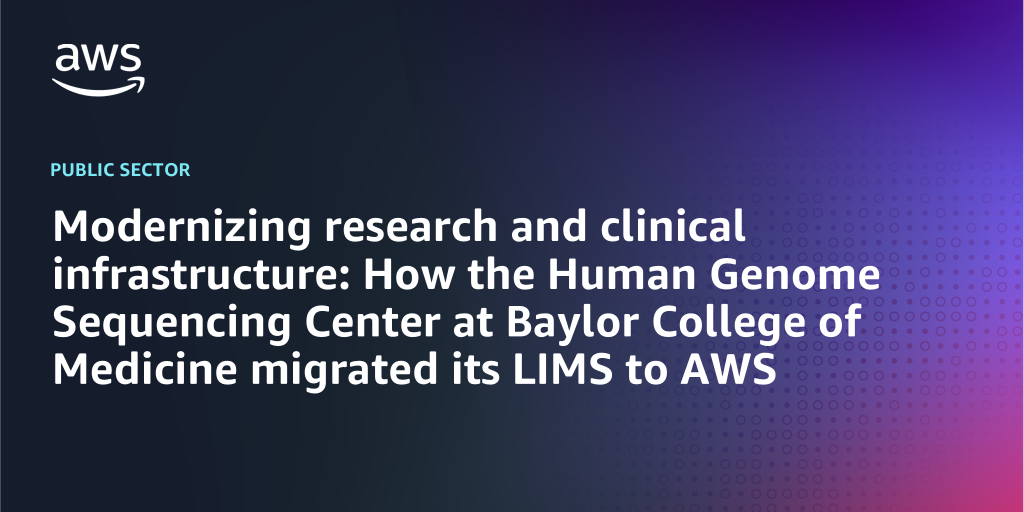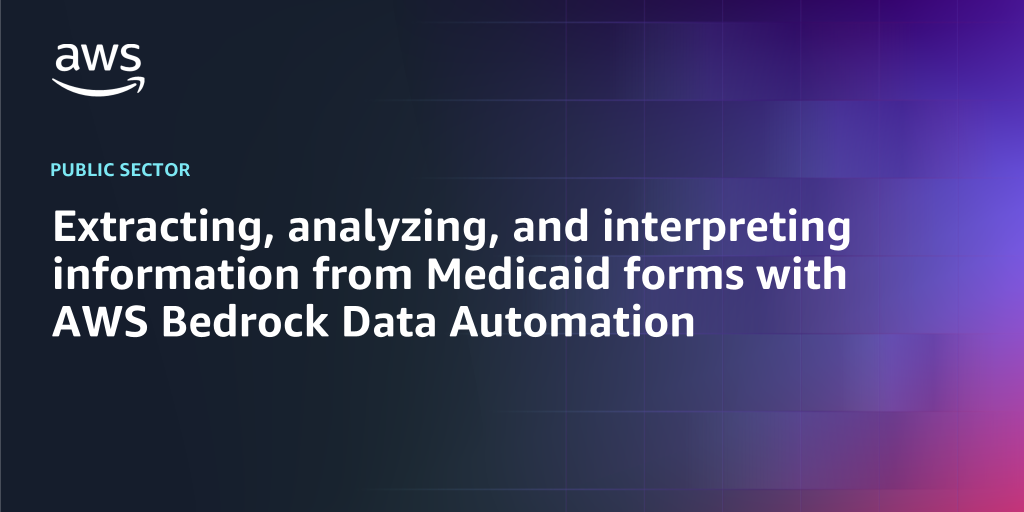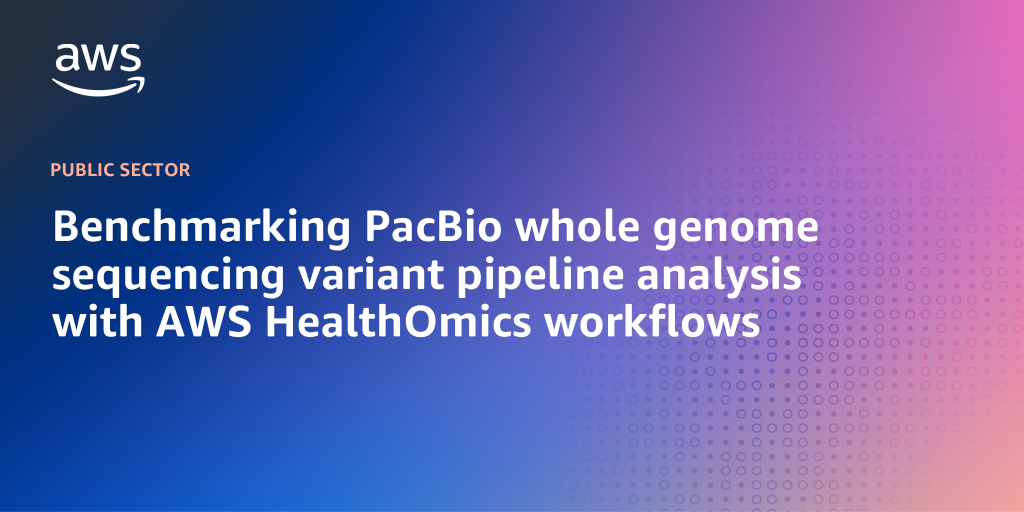AWS Public Sector Blog
Tag: healthcare
Modernizing research and clinical infrastructure: How the Human Genome Sequencing Center at Baylor College of Medicine migrated its LIMS to AWS
Read this post to learn how Baylor College of Medicine’s Human Genome Sequencing Center migrated its Laboratory Information Management System (LIMS) to a secure, hybrid cloud environment in collaboration with AWS. The migration strengthened the system’s reliability, improved security, lowered costs—all while laying the groundwork for future growth.
Extracting, analyzing, and interpreting information from Medicaid forms with AWS Bedrock Data Automation
What if paper forms could be processed at the same speed as digital forms? What if their contents could be automatically entered in the same database as the digital forms? Medicaid agencies could analyze data in near real-time and drive actionable insights on a single dashboard. Whether a provider submits claims electronically or on paper, the claim could be adjudicated using the same process and analyzed the same way, saving both time and money. AI and ML services from AWS allow Medicaid agencies to create this streamlined solution. Moreover, AWS enables the adoption of solutions like this by providing no code or low code serverless services. Read this post to learn more
Benchmarking PacBio whole genome sequencing variant pipeline analysis with AWS HealthOmics workflows
This post demonstrates PacBio’s whole genome sequencing variant pipeline implementation on AWS HealthOmics, offering performance optimization insights and evidence-based recommendations for cost-effective deployment at scale based on extensive benchmarking.
Building an AI-powered scientific meeting transcription platform with AWS
In this post, we explore how to build a sophisticated meeting transcription and analysis platform using AWS services, designed specifically for the scientific community. Our solution combines the power of AWS Transcribe, Amazon Bedrock, and other Amazon Web Services (AWS) services to create an intelligent tool that transforms how researchers document and analyze their discussions.
PixelGuard: Advancing healthcare data privacy through AI-driven de-identification system for medical imaging research
PixelGuard—built on AWS—is an advanced software solution that deidentifies medical images while preserving clinical relevance and efficacy. It uses over 75 state-of-the-art AI-driven models capable of detecting and redacting multilingual, multi-orientation text across all major formats, alongside configurable metadata anonymization. Read this post to learn more.
Building resilient healthcare systems through cloud computing
A newly released guide by AWS titled “Resilient Healthcare through Cloud: A Strategy and Policy Guide” provides a comprehensive framework for enhancing healthcare resilience through cloud computing while meeting regulatory requirements and improving patient outcomes. Read this post to learn more.
Building trust in healthcare data: Real-world interoperability with AWS HealthLake and DataArt
DataArt, an AWS Advanced Consulting and Healthcare Competency Partner, helps clients respond to the regulatory and operational pressures outlined in the previous section. DataArt turns complex data modernization challenges into clear, standards-driven solutions built on AWS HealthLake, a fully managed, HIPAA-eligible FHIR storage, transactional, and analytics service.
Transforming European healthcare: HippocrAItes’ EHDS-ready health data platform
HippocrAItes, Finland-based healthcare data & AI innovation company built the Hippo Health Platform on Amazon Web Services (AWS), combining secure, scalable cloud infrastructure with a user-centric approach to health data. The platform unifies data from national repositories and personal devices into a single, secure health account. Read this post to learn more.
Highlights from the 2025 AWS Summit Washington, DC keynote
Cloud infrastructure expansion, agentic AI advancement, and national security initiatives took center stage today during the keynote of the AWS Summit Washington, DC. The annual gathering in the nation’s capital showcased the continued commitment of AWS to public sector innovation and digital transformation.
Why government health agencies worldwide are selecting AWS to transform patient care
Healthcare systems around the world are facing unprecedented challenges, from addressing chronic conditions to supporting aging populations and addressing emerging health threats, and it has become unmistakably clear that technology is no longer just a support function—it’s a force-multiplier that can transform health outcomes. At AWS, we’ve witnessed a remarkable shift as health agencies worldwide increasingly choose cloud computing to drive innovation, enhance research capabilities, and ultimately, improve patient outcomes.









